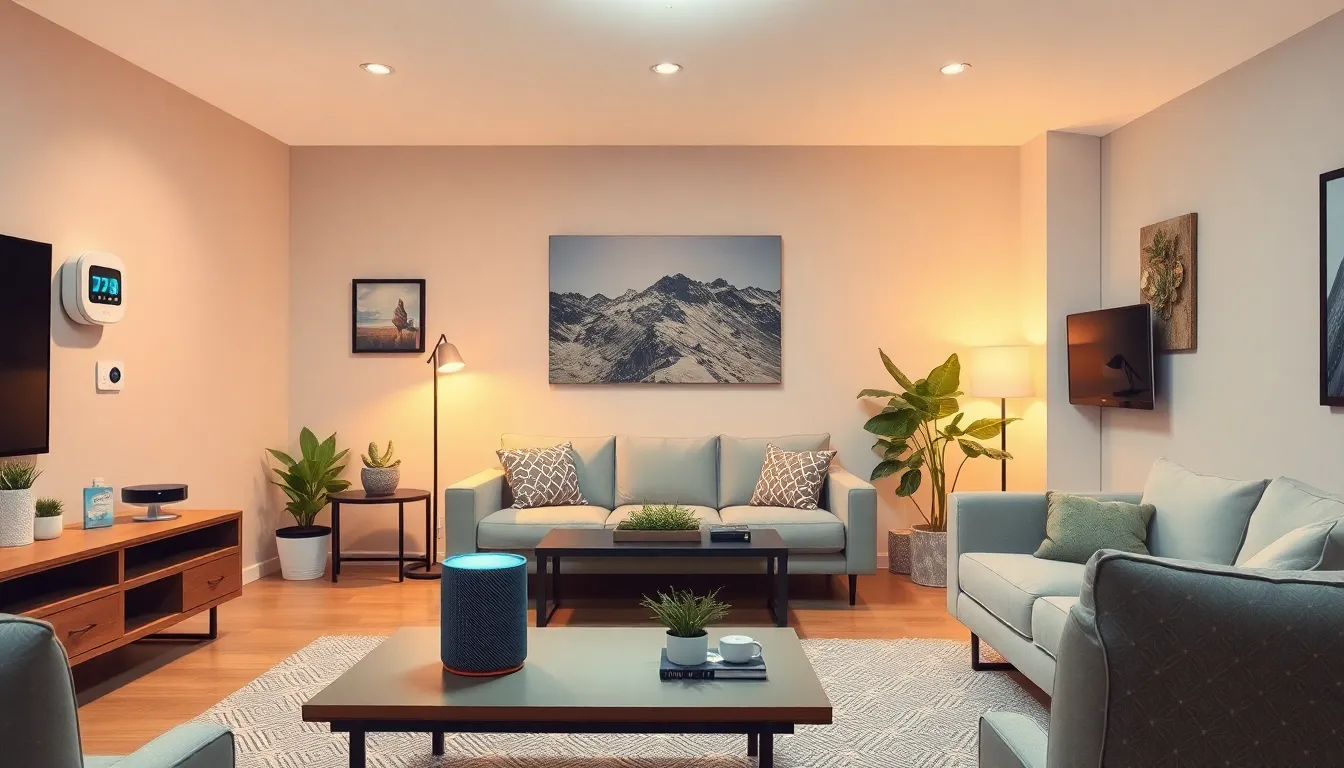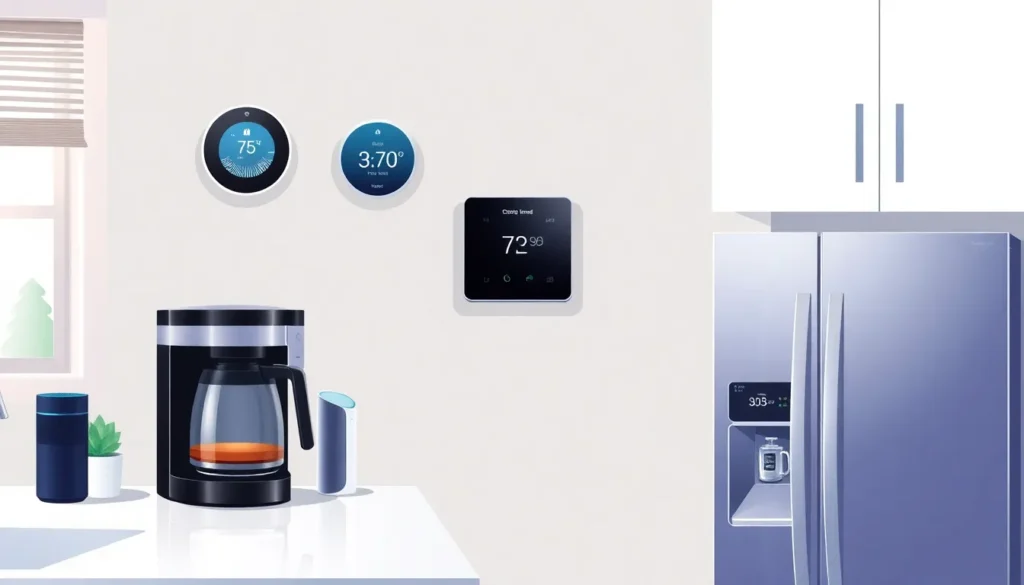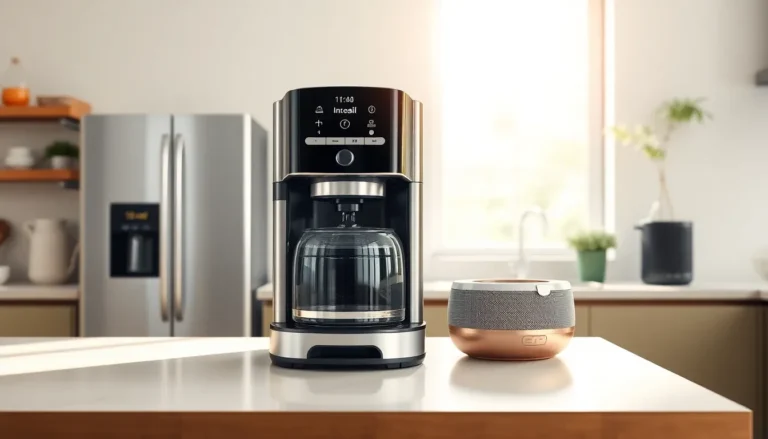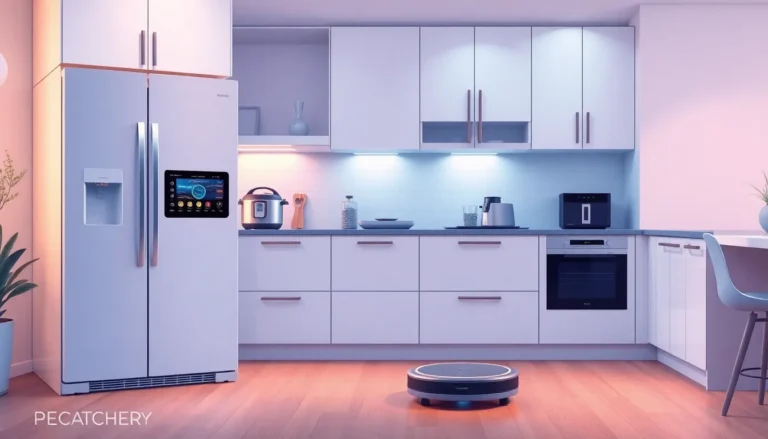Table of Contents
ToggleIn a world where even your toaster might be smarter than your high school math teacher, smart devices have taken center stage. These gadgets aren’t just for tech enthusiasts anymore; they’re making life easier, funnier, and sometimes a bit too convenient. Imagine having a coffee maker that knows your caffeine cravings better than your best friend.
Overview of Smart Devices
Smart devices integrate advanced technology, transforming daily activities. These gadgets streamline tasks, offering enhanced comfort and efficiency. Users benefit from a range of options, including smart speakers, which respond to voice commands, and smart thermostats, which learn temperature preferences over time.
Smart cameras enhance home security by providing real-time video feeds and motion detection. Automated lighting systems adjust brightness based on occupancy, making spaces more energy-efficient. Smart refrigerators track food inventory, sending alerts when items expire or need replenishment.
Wearable devices, such as fitness trackers, monitor health metrics like heart rate and sleep patterns. Health-focused innovations include smartwatches, which provide notifications and apps that assist in scheduling and daily activities. Automation extends beyond wearables, with robotic vacuum cleaners managing household cleaning tasks.
Smart home hubs act as centralized control units for various connected devices. These hubs create seamless communication between devices, allowing users to control everything from security systems to entertainment systems with one interface. Smart appliances, like ovens and dishwashers, offer remote operation and precise cooking features.
The market for smart devices continues to expand, addressing needs across various sectors. Schools utilize smart boards for interactive learning, while businesses adopt smart technologies for improved productivity. Improved connectivity among devices fosters a more integrated lifestyle, enhancing user experience and satisfaction.
Smart technology serves as a bridge to greater convenience, ensuring users remain engaged and informed throughout their day-to-day activities.
Categories of Smart Devices

Smart devices categorize into various segments, each offering unique functionalities that enhance everyday life. Each category includes innovative options tailored to meet users’ diverse needs.
Home Automation Devices
Home automation devices transform living spaces into smart environments. Smart speakers enhance interaction by responding to voice commands. Smart thermostats manage heating and cooling, learning preferences to ensure comfort. Security cameras provide real-time surveillance, enabling users to monitor their homes remotely. Automated lighting systems adjust brightness based on occupancy, contributing to energy efficiency.
Wearable Technology
Wearable technology integrates into daily routines, fostering a healthier lifestyle. Fitness trackers monitor activity levels and health metrics, encouraging users to meet their fitness goals. Smartwatches streamline communication, delivering notifications for calls and messages directly to the wrist. Sleep trackers analyze sleep patterns, offering insights to improve rest. Combining style and functionality, wearables engage users in health management.
Smart Appliances
Smart appliances raise the standard of household efficiency. Smart refrigerators track food inventory, notifying users about expiration dates. Intelligent ovens streamline cooking by allowing remote access for monitoring and adjusting settings. Washing machines provide smart cycles that adapt to load size and fabric type, optimizing wash performance. Dishwashers equipped with sensors adjust water usage based on soil levels, making them environmentally friendly.
Popular Smart Devices Examples
Smart devices have gained immense popularity, transforming how people interact with their environments. They provide convenience, efficiency, and enhanced user experiences in everyday tasks.
Smart Speakers
Smart speakers respond to voice commands, enabling users to control various functions hands-free. Amazon Echo, Google Nest, and Apple HomePod exemplify the wide array of products available. These devices play music, provide news updates, and even control other smart home devices. Integration with virtual assistants like Alexa or Google Assistant enhances voice recognition capabilities. Smart speakers also support third-party applications, enriching user interaction with personalized content.
Smart Thermostats
Smart thermostats also revolutionize climate control within homes. Devices such as the Nest Learning Thermostat and Ecobee SmartThermostat adjust heating and cooling based on user habits. They learn preferences over time, optimizing energy efficiency and comfort. Users can manage settings remotely via mobile apps, ensuring ideal temperatures before arriving home. Enhanced features like weather monitoring and energy usage reports offer valuable insights for smarter energy management.
Smart Security Cameras
Smart security cameras strengthen home security significantly. Products like the Arlo Pro and Ring Indoor Cam deliver high-definition video monitoring and real-time alerts. Some models include motion detection, night vision, and two-way audio, increasing safety measures. Smartphone integration allows users to view live feeds from anywhere, ensuring peace of mind. Cloud storage options provide easy access to recorded footage, enhancing overall home security strategies.
Benefits of Using Smart Devices
Smart devices enhance convenience by automating daily tasks. Increased efficiency leads to more free time for users. Cost savings come from energy-efficient features, such as smart thermostats and automated lighting systems that adapt based on occupancy.
Enhanced security is another major benefit. Smart cameras provide real-time video feeds, allowing homeowners to monitor their property remotely. Alerts notify users of unusual activity, offering peace of mind.
Personalized experiences increase satisfaction with smart technology. Devices learn user preferences, like the Nest Learning Thermostat, adjusting temperature settings automatically. Adaptive washing cycles in smart appliances optimize water and energy use based on load types.
Health and wellness monitoring are accessible through wearable devices. Fitness trackers provide data on physical activity, heart rate, and sleep patterns. Integrating these metrics into daily routines fosters healthier lifestyle choices.
Centralized management simplifies device control. Smart home hubs enable users to manage various gadgets from one interface. Automation reduces the complexity of coordinating multiple devices, making smart environments easier to navigate.
Smart devices promote connectivity within households. Families benefit from voice-activated speakers, encouraging interaction through music or information requests. Enhanced communication tools, such as video doorbells, keep everyone informed about visitors.
Lastly, the evolving market for smart technology reflects an increasing focus on user-friendly innovation. Continuous advancements ensure that smart devices remain relevant and impactful, integrating seamlessly into day-to-day life.
Smart devices have fundamentally changed how people interact with their environments. From enhancing home security to promoting healthier lifestyles, these technologies provide unparalleled convenience and efficiency. The growing variety of options ensures that users can find solutions tailored to their specific needs.
As the market continues to evolve, smart devices will likely become even more integrated into daily life. Their ability to streamline tasks and offer personalized experiences will keep them at the forefront of innovation. Embracing these advancements not only enhances comfort but also fosters a more connected lifestyle, making everyday activities simpler and more enjoyable.







